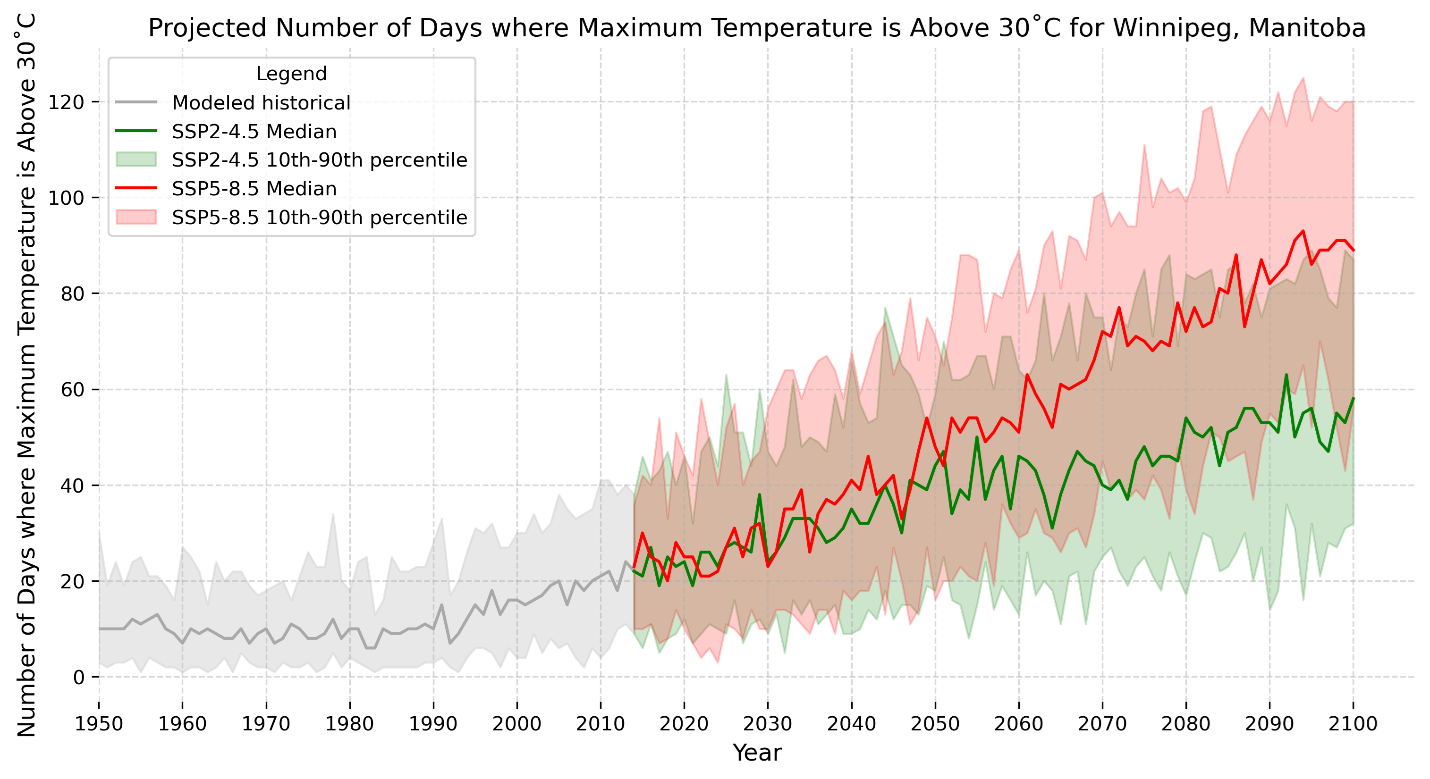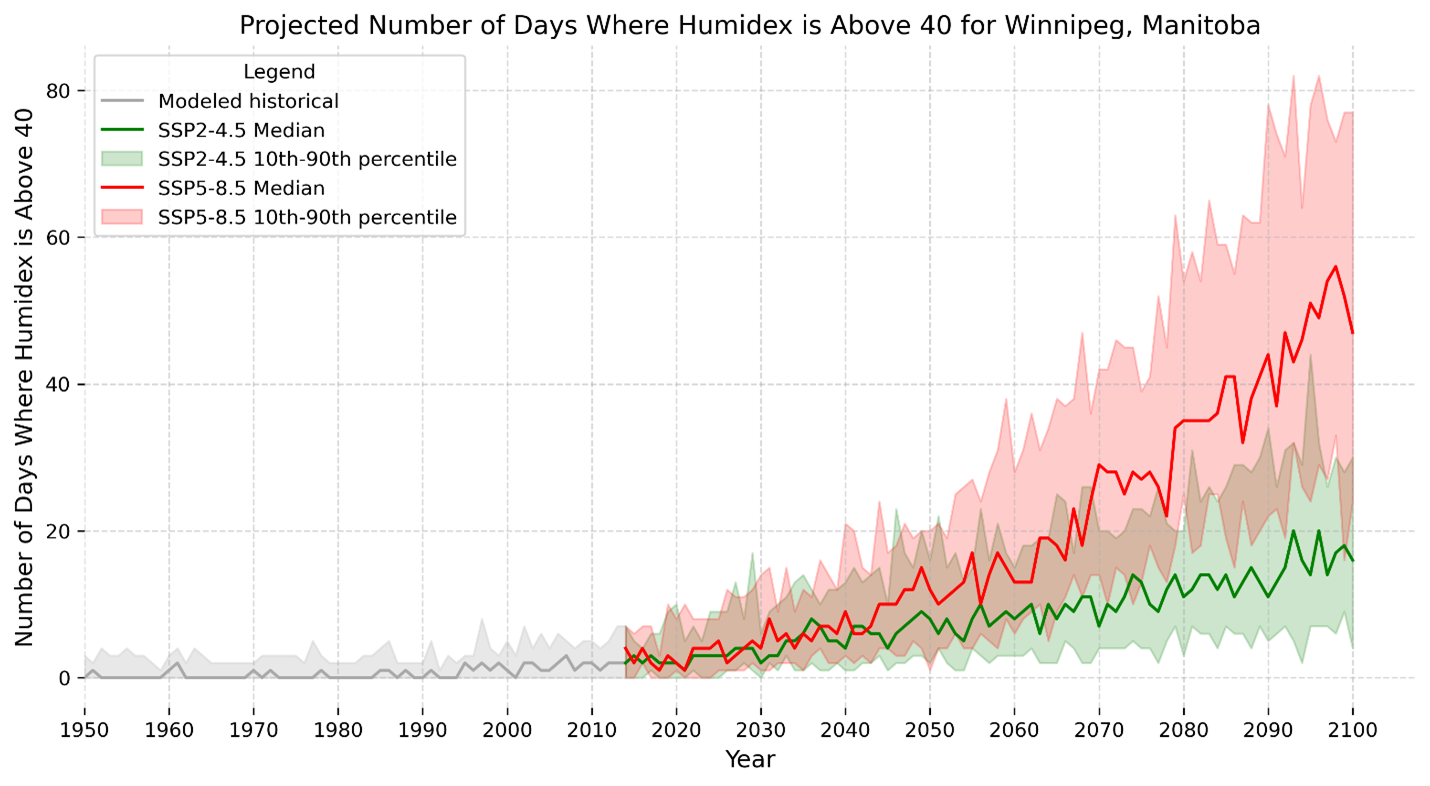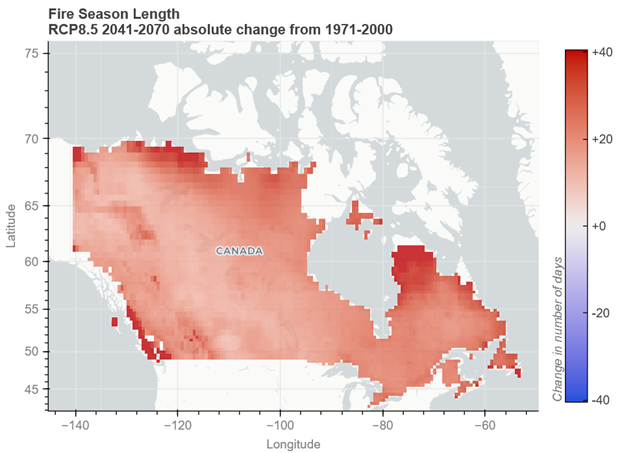Introduction
Every summer, thousands of Canadians lace-up to participate in marathons, half-marathons, and community races. These events not only test endurance, but celebrate health, community, and the outdoors. Increasingly, however, they are also being shaped by the realities of a changing climate. Organizers are finding themselves on the front lines of adaptation—responding to rising temperatures, smoke-filled skies, and shifting seasonal norms.

Heat Stress and Race Cancellations
In June 2022, the Manitoba Marathon in Winnipeg was abruptly cancelled mid-race due to extreme heat and humidity. Runners had barely crossed the starting line before conditions became unsafe, with numerous participants requiring medical attention for heat-related illnesses. Organizers cited the health and safety of runners and volunteers as their top priority, and made the difficult decision to halt the event.
Such disruptions are becoming more common. Across southern Canada, heatwaves are increasing in both frequency and severity, especially during the late spring and summer months, when most road races are scheduled.
These trends are prompting difficult questions for event planners. Should races be held earlier in the year to avoid peak heat? What medical and hydration supports are necessary on race day? And how can organizers use climate data to make decisions that protect public safety?
This article uses climate projections from ClimateData.ca to help answer these questions.
Using ClimateData.ca to Investigate the Future of Marathons in Winnipeg
Temperature
Projections computed using the Download Page on ClimateData.ca indicate that the number of days above 30°C is expected to rise substantially under both moderate- and high-emissions scenarios (Figure 1). In Winnipeg, the historical average of around 11 days above 30°C could more than double by mid-century and could reach about 90 days by the end of the century under a high emissions scenario. In a moderate emissions scenario, Winnipeg is likely to see a doubling of days above 30°C by mid-century and could reach about 60 days per year by the end of the century.

Figure 1: The projected number of days where maximum temperature is above 30°C under a moderate emissions scenario (green, SSP2-4.5), and a high emissions scenario (red, SSP5-8.5) from 1950 to 2100 (gray delineates the historical modelled period).
Humidex
Humidex combines temperature and humidity into one number to reflect the perception of temperature by the average person. Because it accounts for the two most important factors that affect summer comfort (i.e., temperature and humidity), humidex is a better measure of how weather affects the human body compared to temperature or humidity alone. According to the Canadian Centre for Occupational Health and Safety, when humidex is 40 or above, all unnecessary physical activity should be reduced, making this a clear indicator for when marathons should be cancelled.

Figure 2: The projected number of days where humidex is above 40 under a moderate emissions scenario (green, SSP2-4.5), and a high emissions scenario (red, SSP5-8.5) from 1950 to 2100 (gray delineates the historical modelled period).
Historically in Winnipeg, there have not been many days where Humidex has exceeded 40 (typically about 2 days per year) (Figure 2). However, by 2050, the city could experience 8 to 12 days per year where humidex is above 40. By 2100, the city could see many more of these days – about 16 in a moderate emissions scenario, and 47 in a high emissions scenario. This number of days with humidex above 40 could significantly alter the availability of dates for hosting the Manitoba Marathon in Winnipeg.
Wildfire Smoke and Air Quality Concerns
In addition to extreme heat and high humidex, wildfire smoke has emerged as a growing concern for outdoor events. The 2023, 2024, and 2025 wildfire seasons brought hazardous air quality to many Canadian cities, sometimes for days or weeks at a time. In the summer of 2023, several races in the northern United States and western Canada were shortened, postponed, or cancelled outright due to wildfire smoke, including events in Alberta and British Columbia.
Already in 2025, wildfires in north and eastern Manitoba, northern Saskatchewan, and northwestern Ontario have triggered air quality advisories across central and eastern Canada. These conditions can be particularly dangerous for endurance athletes, whose exertion increases their respiratory intake and vulnerability to fine particulate matter.
Using ClimateData.ca’s Fire Weather Projections application, we examined how Canada’s fire season length (see Box 1) may change in the future (Figure 3). Results indicate that fire season length is projected to increase across the country. Across much of the Prairie Provinces, an increase in the fire season length of approximately 15 days is projected under a high emissions scenario (RCP8.5) near the middle of this century (2041-2070), relative to a 1971-2000 baseline. In some locations, such as coastal B.C., projected increases exceed 80 days. Fire season length projections do not estimate the number, size, or intensity of wildfires. However, lengthening of the fire season, as well as projections that show an increase in the severity of fire weather conditions, indicate that fire danger in Canada is projected to increase in a warming climate. A longer fire season generally results in greater risks of poor air quality.












